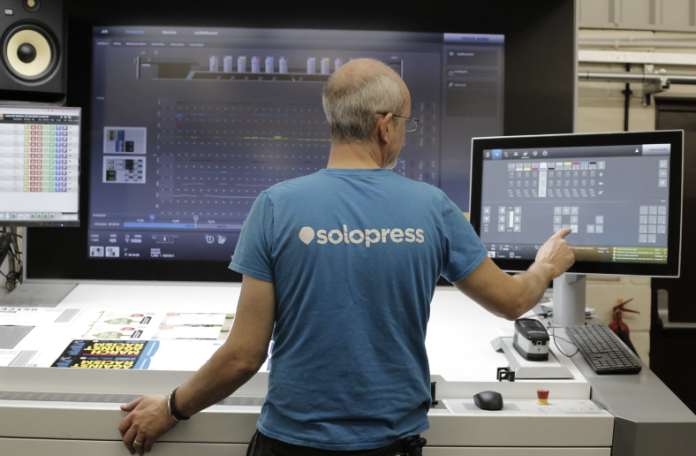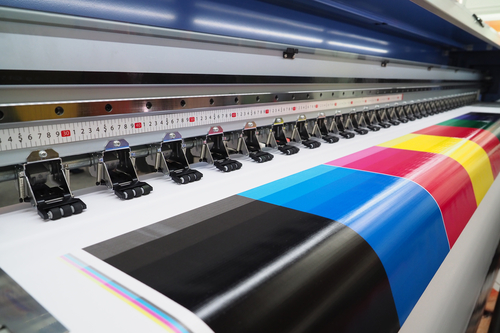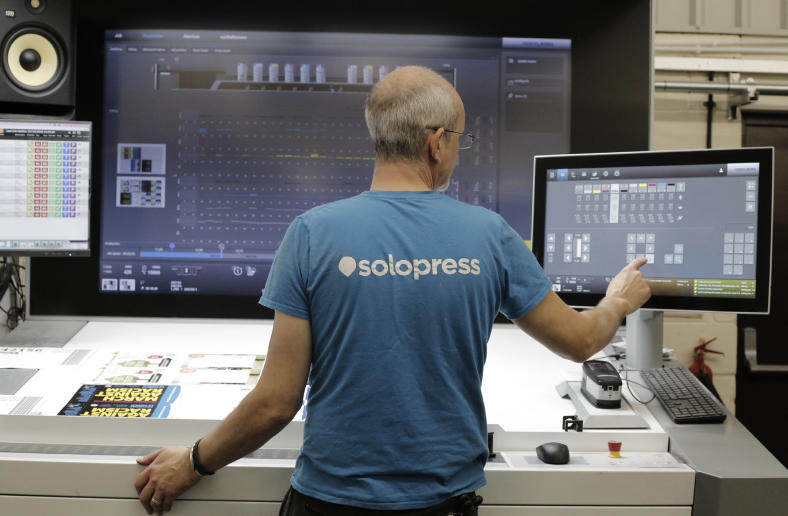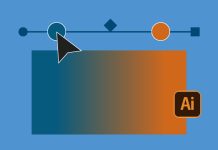Lithographic and digital printing are two distinct methods of applying ink to paper. Lithographic printing, also known as offset or litho, is a traditional process that uses metal plates to transfer wet ink onto a rubber blanket, then onto paper. It’s built around the principle that oil and water do not mix, allowing for extremely precise colour reproduction and consistency across large print runs.
Digital printing takes a direct approach. It reproduces artwork straight from a computer file using toner or liquid ink, with no need for plates. This makes it quicker to set up, ideal for shorter runs or jobs requiring frequent updates or personalisation.
Which is better: digital or lithographic printing?
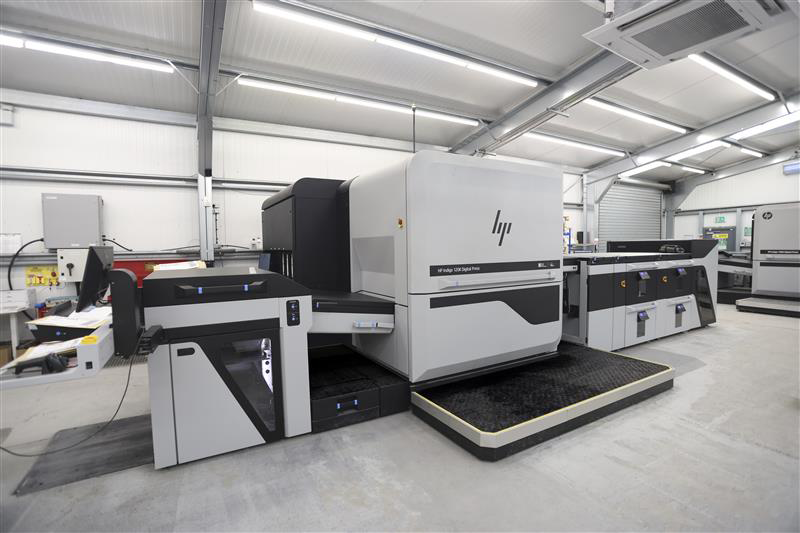
Neither process is universally better. The right choice depends on the quantity, turnaround time and colour precision your job requires.
Litho remains the preferred option for long runs and colour-critical work, offering the lowest cost per unit and excellent consistency once set up. Digital printing, meanwhile, has advanced to the point where its quality often rivals litho for smaller jobs, with faster turnaround and lower setup costs.
Modern digital presses such as the HP Indigo 120K now achieve near-offset quality while printing up to 6,000 sheets per hour, narrowing the gap between the two methods.
How does lithographic printing work?

Lithographic printing works by separating images into four base colours: cyan, magenta, yellow and black (CMYK). Each colour has its own plate mounted on a cylinder. The image areas on each plate attract ink, while the non-image areas attract water.
The inked image is transferred first to a rubber blanket cylinder and then “offset” onto the paper as it passes through the press. Additional units can apply Pantone or metallic inks where exact brand colours or special finishes are required.
This process achieves high accuracy and repeatability, which is why litho remains the industry standard for commercial print in high volumes.
How does digital printing work?
Digital printing eliminates the need for plates. The image is produced directly from digital data, allowing immediate output and easy version control.
Two main systems are used in commercial digital printing:
- Laser printing: Uses a laser to draw an electrostatic image onto a drum, attracting toner which is then fused to the substrate with heat.
- Inkjet printing: Sprays microscopic droplets of liquid ink directly onto paper or other materials.
Specialist variants include dye-sublimation, used for textiles and merchandise, and UV printing, which cures ink with ultraviolet light to print on materials such as plastic, wood and metal.
What types of products suit lithographic printing?
Litho printing is best suited to large-volume, high-quality jobs such as:
- Brochures and catalogues
- Perfect bound and stitched books
- Flyers and Leaflets
- Posters and promotional campaigns
Once a litho press is running, it can deliver thousands of identical sheets with excellent colour consistency and sharp detail at a low cost per unit.
What types of products suit digital printing?
Digital printing excels in flexibility and speed, making it the first choice for:
- Short-run Flyers and Leaflets
- Personalised marketing materials
- On-demand books and magazines
- Large format print
- Prototype packaging and proofs
Because no plates or drying time are required, digital jobs can begin almost immediately, which is why it’s often used for same-day or next-day delivery.
Which is cheaper: lithographic or digital printing?
It depends on the run length and complexity.
- Digital printing is more cost-effective for short runs (typically under 1,000–2,000 units) because setup is minimal.
- Litho printing becomes cheaper for long runs, as the initial plate and setup costs are offset by a lower cost per sheet once production begins.
The crossover point varies depending on paper type, finishing and press size, but most print companies will assess both options before quoting.
Which is faster?
Digital printing is faster to over shorter runs because there’s no make-ready stage. Files can be sent directly to press, making it ideal for urgent jobs. Litho takes longer to set up, but once running, it can produce thousands of sheets per hour. For larger orders, litho often overtakes digital on total production time.
How do the skill requirements differ?
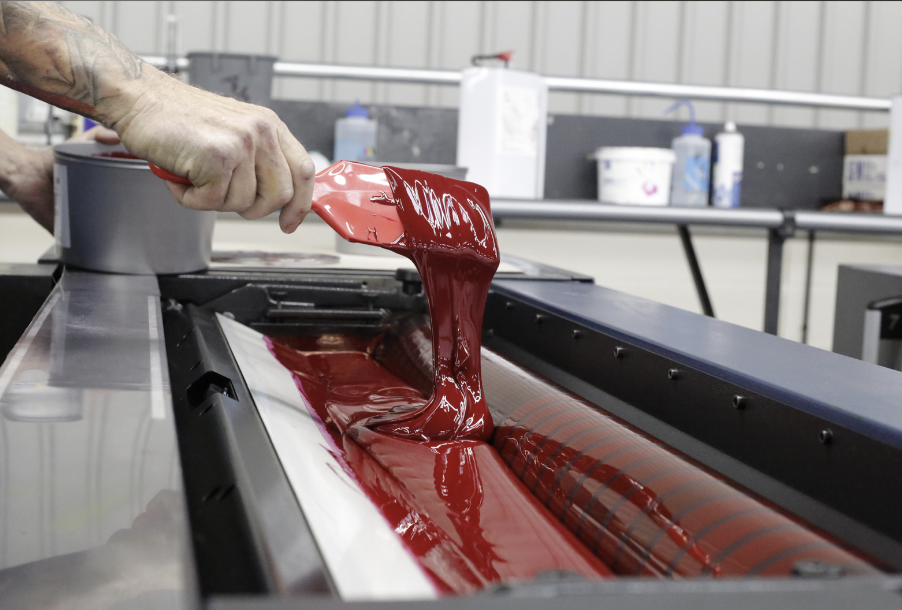
Operating a litho press requires specialist knowledge and experience. Skilled press operators manage plate alignment, ink balance and colour calibration to maintain consistent results across long runs. Several team members may be involved in pre-press, operation and finishing.
Digital presses are more automated and need fewer handlers. Operators focus on file preparation, colour profiling and quality control rather than manual setup. This efficiency allows digital systems to handle high volumes of smaller jobs with minimal downtime.
How is digital technology improving lithographic printing?
Although litho is a physical process, modern presses now integrate digital automation to speed up setup and reduce waste. Systems from manufacturers such as Heidelberg feature self-learning controls that automatically adjust ink flow, registration and paper feed during printing.
These innovations streamline the traditional litho workflow, cutting makeready times and improving consistency between runs. As a result, litho remains competitive in both quality and efficiency.
Do print companies use both lithographic and digital presses?
Yes. Large scale print companies with a broad range of products often invest in both because they serve different purposes. Digital printing offers flexibility, personalisation and speed. Litho delivers cost efficiency, scale and high-quality and colour reproduction on longer runs.
Together, they allow printers to handle every type of order, from one-off prototypes to mass production runs, while maintaining consistent quality and reliable turnaround times.
What are the pros and cons of lithographic and digital printing?
| Factor | Lithographic printing | Digital printing |
| Setup time | Longer – requires plate creation and calibration | Immediate – prints directly from file |
| Cost efficiency | Best for long runs | Best for short runs |
| Turnaround | Slower to start, fast once running | Rapid start, ideal for urgent jobs |
| Print quality | Exceptional colour accuracy and fine detail | Offset-comparable with modern presses |
| Colour range | Full CMYK plus Pantone and spot inks | Limited to around 97% of colour gamut |
| Flexibility | Fixed artwork per plate | Each copy can be unique |
| Labour skill | Requires experienced press operators | Fewer handlers, mostly automated |
| Integration | Digitally assisted setup and control (Heidelberg) | Fully digital workflow |
| Best for | Brochures, books, catalogues, long-run marketing | Short-run materials, personalisation, proofs |
The bottom line
Lithographic and digital printing are complementary, not competing. Both continue to evolve, and the best print companies combine them to deliver the right balance of quality, cost and speed for every project.

